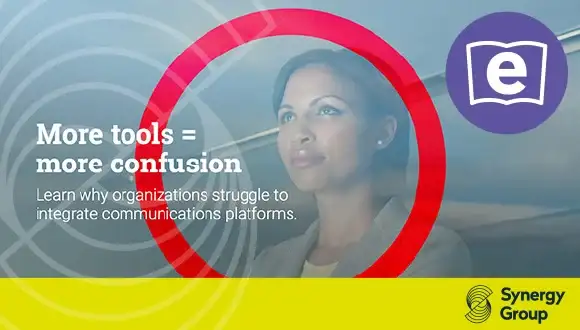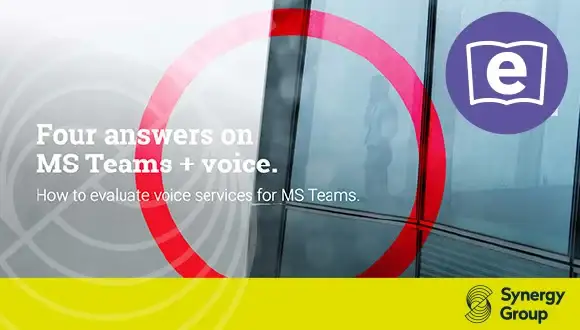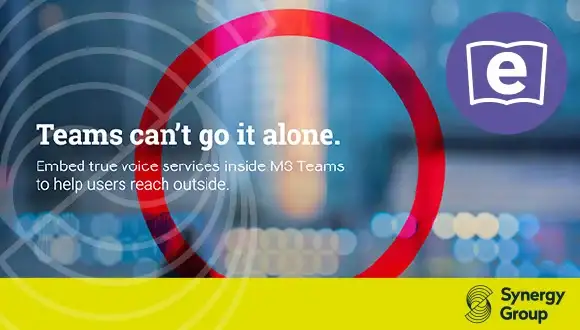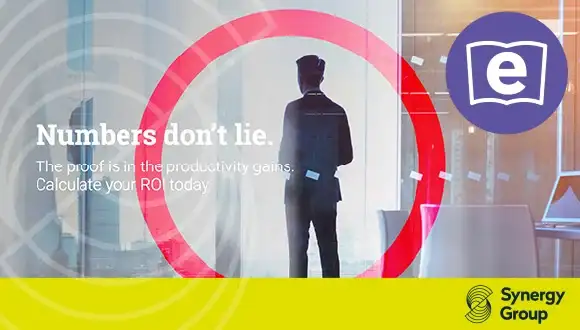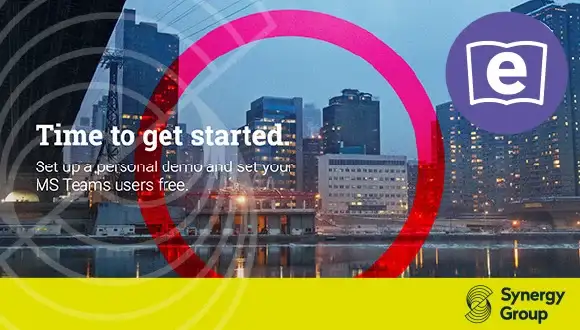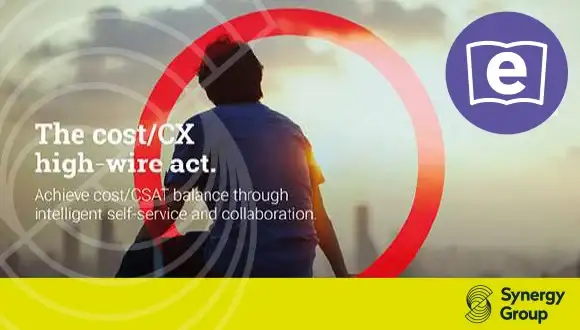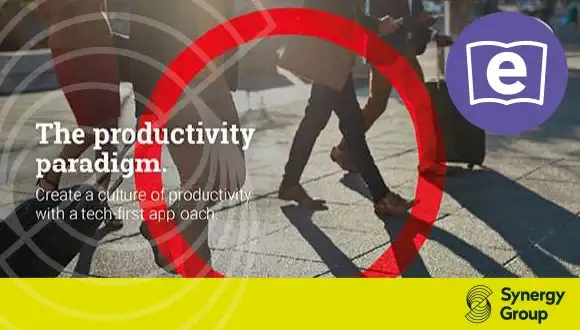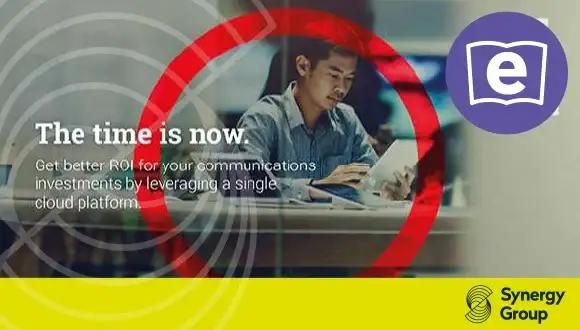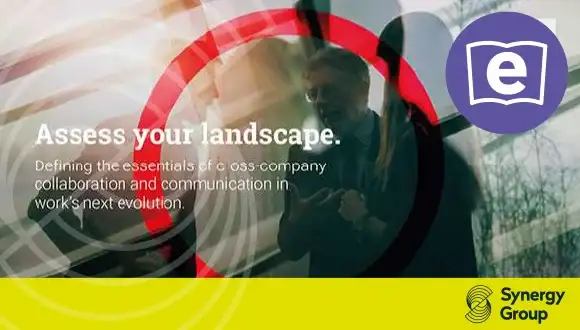2022 Business Communications Trends
2022 Business Communications Trends
We are all navigating unprecedented change on a massive scale. Organizations need help from migrating their communications to the cloud, to solving myriads of internal and external threats. Employee retention and productivity are rocketing up priority lists. Customer expectations are rising about service. They want instant responsiveness increasingly by text/SMS in addition to phone and email.
8×8 asked experts to break down the top business communication trends of 2022. The following essays cover topical issues like the state of digital transformation, security, and process automation.
Collectively they form a guidebook about conversations businesses can have with their technology advisors to assess their business communications needs and go forward developing plans to help them successfully navigate the new world of work. Read on to learn more.
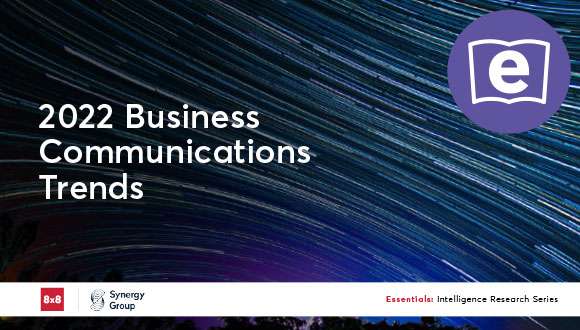
Download 2022 Business Communications Trends eBook.
Your eBook will download or preview dependant on your browser settings.
Connected culture
Editor’s note: the following is an excerpt from the Constellation Research report “Employee Experience – Moving to a Decisive New Model for the Future of Work.”
The return-to-work phase now presents an unprecedented opportunity for organizations to rethink the employee experience in ways that respect individual differences— including home lives, skills, inclinations, capabilities, mindsets, personal aspirations, and other factors—while also adapting to rapidly changing circumstances. This includes bringing to bear perhaps the largest wave of innovation in digital employee experience the industry has ever seen—both in approach and in the technologies.
The good news is that with advances in analytics techniques, mass engagement and collaboration tools, work behavioral support tools, real-time work coordination systems, two-way communication channels, and other technologies, leaders have an embarrassment of riches at hand now to address employee experience in a more focused and dynamic way. Not only can they drill down on which employees require more and varied types of support, but they also can personalize the actions that create widely shared and much- needed feelings of well-being and cohesion across the workforce.
“The growing sense is not that the new digital tools being rolled out to enable workers are hobbling productivity; rather it is that the sheer number of such applications—each working differently—provides an inconsistent user experience.”
Dion Hinchcliffe, Employee Experience – Moving to a Decisive New Model for the Future of Work
This path leads directly to more connected, effective, engaged workers who can create an unbeatable competitive advantage for the organization, never mind that it’s the most responsible way to support and provide a rewarding and sustainable future for organizations going forward. But the challenge is in committing the time and resources to better design today’s relatively haphazard jumble of digital tools and touchpoints, adding vital new capabilities along the way and delivering them in a more usable and consistent manner.
“On average, companies are using seven different tools for messaging, collaboration, file sharing, and meeting management.”
Dion Hinchcliffe, Employee Experience – Moving to a Decisive New Model for the Future of Work
Era of integrated
communications
Era of integrated communications
In 2022, change will continue to be the only constant. This means changing staffing models and locations as work moves beyond being a place to go.
This means changing customer expectations and changing employee demands as events such as the Great Resignation and Great Reprioritization continue. As workers leave by the millions each month with expectations for better work/life balance, better pay, better culture, better technology, better you name it, customers, despite the disruption, will continue to expect more, more, more.
This means changing customer and employee experiences, as business and talent are no longer limited by time or place. Employees will expect to be able to work any time from anywhere, and customers will expect the same 24/7 engagement.
While organizations were given a sympathetic adjustment-period pass in 2020 and 2021, expect customer and employee patience to run short in 2022. Businesses will need to make long-term technology choices that own up to today’s and tomorrow’s demands. Agility will become the number one competitive advantage, and the requirements around it will advance and accelerate the era of integrated communications.
New CX + EX demands demand a UC + CC solution
Enterprises that moved to the cloud in 2020 with band- aid solutions to accommodate remote work and customer engagement are now seeking a single platform solution as they try to best their competitors in digital transformation acceleration, and with that, transforming the employee experience (EX) and customer experience (CX).
Integrated communications is a growing trend in the market where companies see the value in having a single cloud communications platform for all of their needs across unified communications (UC) and contact center (CC). One vendor. No silos. Solving for CX, EX, and everything in between.
The 8×8 eXperience Communications Platform™ for XCaaS is an example of this platform approach. Company-wide collaboration including voice, video meetings, chat, and APIs connects every employee whether they’re in-office, hybrid, remote, or mobile, and extends into the contact center to provide real-time access to organizational SMEs to rapidly serve customers. And non-contact center departments get access to advanced contact center capabilities in their UC apps to improve sales, marketing, and more. This not only enhances agility but business resilience by creating an advantage even in times of adversity.
Composed
experiences
Composed experiences
Collaboration Evolves with Composed Experiences
Hunter Middleton, Chief Product Officer, 8×8
In 2021, employee experience tools combining voice, chat, and video became ubiquitous, enabling collaboration among remote and hybrid teams as everyone moved to remote work. There are certainly user groups out there that will continue to benefit from further technical innovation, but a large number of users are finding that what they got last year from providers is a lot of features, a lot of technology, but not a lot of understanding of what they have to do in their teams each day to use these tools.
They have enough tech. What they need now is for that existing tech to be more aware of their role and use case, and to be thoughtfully combined into experiences that support the specific collaboration going on in their function day to day: field sales teams collaborating around opportunities, event staff that are organized and reorganized into project teams each day, retail floor staff tag-teaming their curbside pickup SMS notifications. One size does not fit all.
The level of collaboration tech-savviness has also moved forward leaps and bounds in the past year. As a result, users are very aware that the generic tools they are given could work so much better for them if only someone would take the current tech and target their use cases better.
8×8 is putting the user first with our focus on building composed collaboration experiences for those poorly served populations that have more needs than the traditional back-office worker, but not so many needs that they require a fancy omnichannel contact center app.
We recently launched 8×8 Frontdesk for the company receptionist. This role requires a specific subset of communication capabilities: incoming call queues, active call handling, and a slick, intelligent company directory. These users aren’t in meetings all day or collaborating in an extensive set of team chat rooms. Today’s ubiquitous, generic, unified communications app has these, but is cluttered with many capabilities they don’t need and is cumbersome for them to use. So we delivered a streamlined, one-page screen with just what they need and several receptionist- specific one-click actions to drastically simplify their repetitive workflow.
This is the year you will start to see use-case- focused user experience design take the forefront in the evolution of collaboration, not another technical innovation.
“I believe the era of composable communications has arrived. Composability should lead to greater customization, so we can all work the way we want.”
Zeus Keravalla, Founder, ZK Research, eWeek
Hypercommunication
Hypercommunication
In our personal lives, we send a text and look for an immediate response. We get excited when we see the dancing bubbles, letting us know that a response is on the way.
In our interactions with companies, often in browser-based chat, rarely do we have the same instant, positive reaction. The time between responses can usually be counted in minutes, not seconds. As a contact center professional, I’m often left wondering how many chats the agent is trying to handle simultaneously and when they’ll get back to me. When instant resolution happens with a company I have trusted with my business, I not only reward them with more loyalty, but I also spread the word.
In late October, I found myself on a plane with a decent Wi-Fi connection and no more energy for work. I decided to do some early Christmas shopping. I filled my cart with 10–12 items, each one personalized with the name of the recipient. I completed the transaction and received a confirmation email. That’s when things took a turn for the worse.
I quickly realized that there were two duplicates. I had mistakenly hit send more than once on those items and hadn’t caught it when reviewing my shopping cart. Because these were customized items, I had just one hour to correct the order, an hour I would still be in the air.
I then noticed that the email said I could call or text to resolve any issues. While making a phone call in the air is a no-no, and pretty difficult with a mask on, I could certainly send a text. And so I did.
The graphic at right tells the story. Very quickly, Mariah at Lands’ End responded to my text, understood the issue, deleted the duplicates, and sent a revised email confirmation. Crisis averted.
As someone who frequently tweets about the customer experience market, the message of this delightful experience was shared with my 14,000 Twitter followers, 2,000 of which saw the tweet and 165 who engaged with it in some way (primarily viewing the full graphic).
There are a few elements in this transaction that illustrate customer experience best practices and growing expectations as we enter 2022:
Voice can no longer be the only option for certain types of transactions.
Even healthcare-related and financial services interactions can be secured with proper security diligence. Today’s customers expect digital options.
Often companies use digital options like chat or messaging to ensure they don’t lose a sales lead.
These agents typically have no ability to manage service-related issues (like mine in this case). Similarly, it is often an outsourced contact center handling the interaction, who again has little information on anything other than sales.
Customers expect more when they contact a company.
They don’t want to be transferred or told to call a toll-free number (with limited hours) to handle an issue. In my situation, this agent was able to communicate within the company to make the required change before it was too late. This may have been digital access to the ordering system or an internal chat function to reach out to a colleague to ensure the change was made.
Finally, the agent who handled my issue was empowered.
She didn’t say she had to transfer me. She didn’t say she had to put me on hold or ask a supervisor. She didn’t say it’s late at night and
there’s no one here that can handle your issue, call back tomorrow. She was empowered not just by the practices of the company, which allowed her to alter an order, but by the systems that the company had put in place to enable her to do so. Instantly.
Instant customer experience is not about one agent delivering great customer service. It’s about a company setting its agents up to succeed, with the digital channels customers want to use and the systems that allow them to communicate across the business to seamlessly solve issues. It’s about a company culture that values delivering great experiences to its customers – to build customers for life.
It’s an expectation you’ll see more of in 2022 and beyond.
Security
advancement
Security advancement
As if IT security executives do not have enough to worry about, the increase in hybrid work environments provides attackers with increased numbers of points of entry into a corporate network. In industry parlance, this is called a threat vector. Work from anywhere also means a breach can start from anywhere.
Hybrid and remote work is not the only current challenge for CISOs. Attacks are becoming increasingly sophisticated and automated. Bad actors are not only using AI to spot network weaknesses, but they are also employing advanced psychological techniques to spot and exploit human weaknesses too — the kind that induces a malicious click. 85% of breaches involve the human element, according to the Verizon 2021 Data Breach Investigations Report (DBIR).
It is this sophistication that shapes my 2022 IT security trends. IT and business leaders must be more vigilant than ever to protect corporate data, intellectual property, and other assets. And by the way, voice and video calls generate data, the ones and zeros of the actual digital calls, but also the metadata that contains analytics and caller/customer information. It all needs to be protected. A few of the trends I see are as follows.
Cloud communications buyers are more proactive about including security into their solution design.
Security is a top UCaaS/CCaaS vendor selection criteria with 90 percent of respondents in a survey conducted for 8×8 by Hanover Research naming it as an important capability. I am seeing more frequent engagement by customer IT security officials as part of the design process. They are asking good questions about identity and authentication, such as, “Do they need to deploy VPN and/or single sign-on (SSO) technologies?” “How does the increasing use of SMS and text messaging in customer interactions as well as their full stack of applications impact risk?”
That security is becoming fully baked into communications solutions as part of the growing zero-trust philosophy which assumes everything attempting to enter your network has bad or illegal intentions until it proves otherwise. This approach has two siblings. One that says you should assume that you will be breached and another that you should assume that your organization will be the subject of an attempted ransomware attack.
These attitudes are effective business continuity and resiliency tools because they allow organizations to plan for potentially-needed recovery operations that minimize financial and data losses as well as unplanned downtime.
There are two additional ways I see cloud computing customers becoming more engaged about their provider and their specific solutions. The first is asking tough questions about a prospective vendor’s security controls they have that maintain uptime and protect data.
Do they have redundant data centers, what are their backup windows, and what is a common mean-time to recovery (MTTR)?
With virtually all cloud services, your data lives on a multi-tenant server in a public cloud. Providers employ isolation techniques to keep your data separate from other customers’ data. While it is not very popular today, I am starting to see more interest in customers purchasing a private instance on a public cloud through their cloud provider so they can implement additional controls or backup protocols. This won’t be for everyone, but it shows
increasing flexible options for customers who are vigilant about their security posture. I expect you will start to see larger enterprises exploring this option more in 2022.
Unintentionally or otherwise, employees are the biggest information security risk.
Phishing works. Verizon’s DBIR says tricking employees to reveal corporate information and access, known as phishing, was part of breaches 36% of the time in the past year.
Not offering phishing training has consequences. KnowBe4’s 2021 Industry Benchmarking Report found that 34.1% of untrained end-users will fail a phishing test.
In 2022, more companies will commit to more employee education to make them less susceptible to phishing attempts. Committing means required classes between two and four times a year. Annual training does not cut it because people forget things they learned or may be less vigilant if the information isn’t fresh in their minds.
Training alone is insufficient. It is important to conduct simulated phishing security tests to determine what percentage of employees are failing the test and which employees need additional training. I see more companies conducting these kinds of tests in the coming year. After all, you can spend millions of dollars on security infrastructure, but all it can take is a single click to allow someone unauthorized access to your network.
Organizations need AI and crowd-sourced intelligence to keep up with cyberattacks.
To give you a sense of the rising numbers of security threats, human researchers from Crowdstrike’s human research team directly identified more than 65,000 potential intrusions in the 12 months ending June 30, 2021. This is naturally a subset of all the potential intrusions in the wild, but it shows how companies, especially smaller and mid-size businesses, can be overwhelmed.
By the end of 2022, utilizing AI and machine learning, in its various forms, will be table stakes for security operations (SecOps) teams whether as an on-premises product, SaaS, or via a managed service. AI will be an organization’s first line of defense to detect anomalous behavior and block potential intrusions as soon as possible.
Businesses are also fighting back cyber adversaries by participating in threat intelligence-sharing programs to spread awareness, prevention, and remediation techniques. There are a growing number of available private and open-source platforms available.
Bug-bounty programs that compensate ethical hackers for disclosing vulnerabilities are increasingly popular too.
Watch your APIs or they could end up biting you in the CPaaS.
Another security trend to watch in 2022 is the growth of SMS, texting, and video (CPaaS) in customer interactions. There are several popular use cases including status alerts, user authentication, customer support, and more. From
a security perspective, these channels present avenues for phishing activities. Many of these services operate via APIs. They could be open source or from a vendor.
Security teams or their trusted advisors need to evaluate the API code and also make sure that APIs are configured correctly with their primary communications applications.
Another security trend to watch in 2022 is the growth of SMS, texting, and video (CPaaS) in customer interactions. There are several popular use cases including status alerts, user authentication, customer support, and more. From a security perspective, these channels present avenues for phishing activities.
Could hybrid work environments cause changes to privacy regulations?
I could write another article about privacy, particularly as the world is changing so rapidly. One question that comes up about privacy is around regulations such as HIPAA and GDPR. Will the regulations adapt to reflect the new world of work and the threats that come with it?
Whether you are logging in to work from the office, your home laptop, or your phone, an endpoint is still an endpoint. So endpoint security controls are not all that different from each other except that you have more control over corporate-owned devices than an employee’s personal devices. Security principles still apply.
However, in practice in 2022, things could be different. For example, could a compliance audit require employee home visits? It is too early to know, but regulators are thinking about what changes and accommodations, if any, need to be made to regulations that impact health care, financial services, government, and other regulated industries.
Final thoughts…
It is going to be an exciting and stressful 2022. Investing in employee training about phishing and ransomware will be some of the best security investments you can make. A 2021 survey by Entrust found that only 52% of employees at enterprise companies were given anti-phishing training and just 31% were given training to prevent ransomware. I think the numbers will go way up in 2022.
Security professionals are a hardy bunch. Many security teams are understaffed for the big tasks ahead of them in 2022. Yet they persevere and hold the line to protect against existential threats to a business. Be patient. Take that online phishing awareness class again or change your password without complaint. Appreciate your IT security professionals. In 2022, it is going to take a village to keep your business secure.
Digital transformation
acceleration
Digital transformation acceleration
Legendary U.S. television actor Sam Waterston famously said, “If you are not moving forward, you’re falling back.” That sounds like modern digital transformation as economic and competitive pressures blow up IT initiative timelines. The pandemic caused projects scheduled for completion in years to be a reality in weeks. So where are we now?
Organizations have come to realize that communications are a core tenant of their business operations that impact every aspect of a customer relationship. Businesses are working to figure out how they can use communications to their strategic benefit, whether that means customer engagement, employee collaboration, e-commerce capabilities, or introducing other innovations.
So from a transformation perspective, that’s where many organizations are today. There seems to be a near-universal recognition that you cannot transform your business if you don’t transform how your communications infrastructure works.
Digital transformation, however, takes on many flavors and shapes. Reinventing a business to adapt to economic, competitive, and customer pressures is an ongoing imperative. This is why digital transformation will be a big 2022 business communications trend even though we are two years in from the beginning of COVID.
More than remote access.
Many of our customers I speak with take a holistic view about their transformation activities that extend beyond providing remote access, which was one of the big early concerns. They are investigating how they can reimagine business processes to make work smarter and more efficient. What tools do employees need to have to be the most productive and collaborative? This is all at a time when concerns about “shadow IT” have disappeared. It is common now for employees to be connected to networks that IT doesn’t control. So it is no easy task.
As a result, a big transformational challenge for IT leaders in 2022 is to optimize employee experiences so they can get work done with as little friction as possible while concurrently serving the demands of the larger organization.
While 71% of the global workforce now sees the physical office space simply as a social amenity rather than a mandatory way of working, 85% feel that being confident in their technology allows them to excel at work.
Continued transformation activities elevate the role of IT.
IT leaders have been rock stars during the past two years, in many cases strengthening organizational resilience, and in some, keeping their companies alive. It has become good corporate governance to give IT a larger seat at the C-suite strategic table and the influence and budget that comes with it. This sounds great on its face, but it also adds a lot of pressure on IT leaders to solve problems and create opportunities quickly. As a result, buying communications services has become much more consultative with a greater reliance on trusted partners. Adopting a cloud telephony platform may be straightforward, but there are a myriad of options to consider including integrations, analytics, collaboration tools, and more.
Blending strategic IT investments that satisfy corporate and employee needs will be one of the biggest digital transformation stories in 2022.
Moving off-premises to the cloud remains part of the transformation story for 2022.
The massive shift to cloud communications is continuing. There is still a large on-prem install base. Many of these companies operate very traditional infrastructures, often supporting industrial applications, financial services, manufacturing, etc. We talk to these kinds of businesses regularly. They are trying to determine how they can gain the benefits of the cloud in ways that work for them and their end users. They are motivated to make sure that their employees have the right tools to be successful in the modern world. For these companies, the move to the cloud can happen in stages as they become assuaged, or at least more comfortable, about how they can maintain performance, availability, and security levels when taking on a new model.
More than 47% of companies now use, or plan to use, UCaaS for their calling needs, while 82% use video for all
You’re using an integrated cloud communications platform, now what?
Personalization is another area ripe for digital transformation in 2022. With more and more integrated services and more plentiful APIs, companies are looking for flexibility to provide employees with tailored (often called composed) experiences meaning they can license features and benefits according to job function or company industry, such as health care or financial services. I would expect the cloud communications industry to get creative to deliver more of these composed services in 2022.
Final thoughts…
Digital transformation will be continually at the top of the corporate agenda because innovation is happening so quickly with tools becoming stronger, faster, and less expensive. Just look at automation, analytics, and AI. As all three become more accessible, we’re seeing companies dive right in to explore how they can benefit from each. Additionally, collaboration and other technologies are maturing all the time. Expect prime time soon for more advanced virtual assistants including conversational interfaces, innovative SMS/Text applications, and AI-based monitoring tools. Plus, there will be companies that find game-changing ways to use 5G.
Perhaps the only bigger buzzword than digital transformation right now is the hybrid workplace. But they are intertwined this year. With the specter of continuing public health situations, hybrid is the new norm, perhaps forever. People and businesses are still trying to determine how they can make hybrid work environments sustainable. This is why digital transformation will be one of the biggest macro IT trends of 2022. Businesses do not want to thrive just for this year, they want to be agile enough to thrive for the long haul.
Your Technology Partner
Call us today on
020 3551 7773
Your Technology Partner
Call us today on 020 3551 7773




